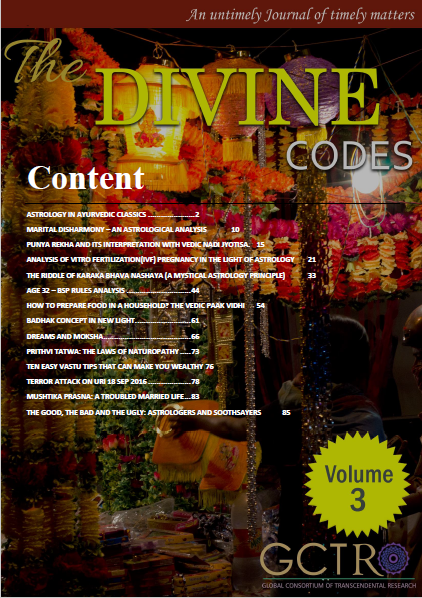Kaalchakara : The Wheel of Time
Research Journal on how Life impacts by transiting planets on lunar mansions by Rakesh Jamwal)un.
Marvel of Vedic Astrology
Research Journal on Blind Chart analysis By Rajesh Kotkal.
The Divine Codes Volume 1 | Issue 1 | by Team Divine Codes
The divine codes journal is an untimely periodical related to Many divine subjects. This includes Vedic Jyotish, Nadi Jyotish, Sariraka Sastram (Palmistry), Sthapathya (Oriental Architecture), Art related topics (Includes photos, paintings, art installations), Yoga, Ayurveda and Spirituality.
The Divine Codes Volume 2 | Issue 1 | by Team Divine Codes
The divine codes journal is an untimely periodical related to Many divine subjects. This includes Vedic Jyotish, Nadi Jyotish, Sariraka Sastram (Palmistry), Sthapathya (Oriental Architecture), Art related topics (Includes photos, paintings, art installations), Yoga, Ayurveda and Spirituality.
The Divine Codes Volume 3 | Issue 1 | October 2016 | By Team Divine Codes
The divine codes journal is an untimely periodical related to Many divine subjects. This includes Vedic Jyotish, Nadi Jyotish, Sariraka Sastram (Palmistry), Sthapathya (Oriental Architecture), Art related topics (Includes photos, paintings, art installations), Yoga, Ayurveda and Spirituality.
Tuesday, November 6, 2018
Research Journal on Ancient Vedic Astro meteorology of India | November 2018
Monday, November 5, 2018
The Divine Codes Volume 5 Released | by Team Divine Codes | October 2018


















